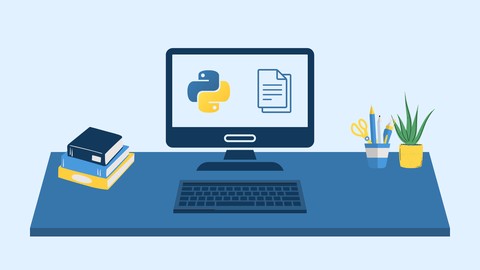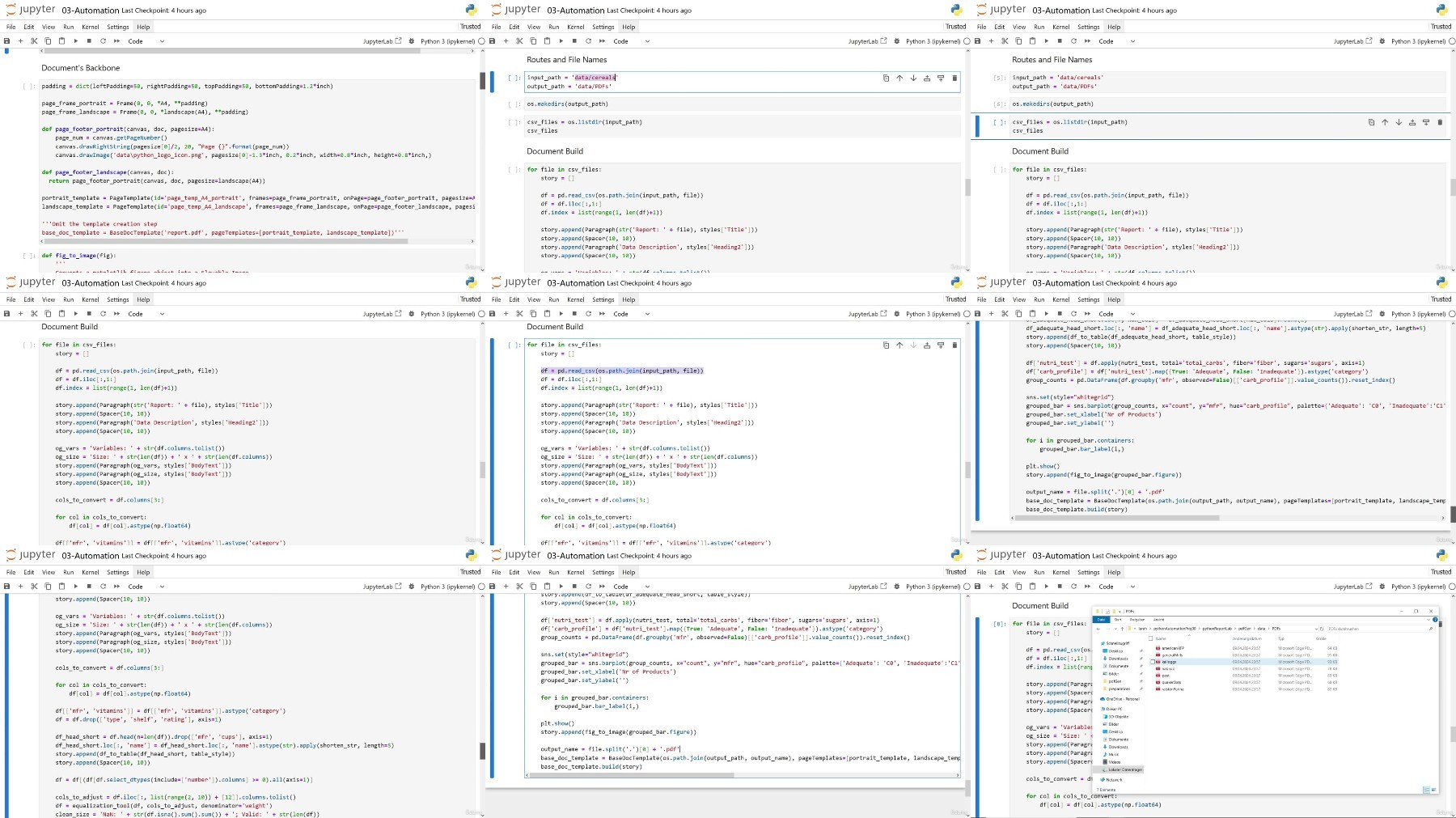Python And Reportlab For Efficient Reporting And Automation

Python And Reportlab For Efficient Reporting And Automation
Published 4/2024
MP4 | Video: h264, 1920x1080 | Audio: AAC, 44.1 KHz
Language: English
| Size: 901.40 MB[/center]
| Duration: 2h 15m
Use Python, ReportLab and data visualization packages like Seaborn and Matplotlib to generate automated reports
What you'll learn
Understand how Python can help you in data reporting
Learn how to speed up the data reporting process
Write Python code to automate PDF report generation
Understand the ReportLab (Python library) document building system
Document data analysis progress and data visualizations in a PDF report
Plan out document templates, layouts and styles
Requirements
General understanding of data visualization
Basic Python skills (dictionaries. lists, loops)
Know how to install Python packages
Interest in analytics
Description
Creating reports is a standard task in the modern working environment. Pretty much every office worker has to do it from time to time, some of us even daily.Therefore it makes perfect sense to be an expert at it. This can save you a lot of time, make your manager happy and you can be of great help to your colleagues. Therefore I will demonstrate in this course how you can use Python and the main package ReportLab to easily create reports and to even automate the process for fast reporting of multiple similar data files.Our target output file type will be the pdf which anybody of us knows and uses regularly.The portable document format, or PDF, is the standard for document sharing since decades. Its cross platform compatibility, the ease of printing and the variety of written and visual content it can handle, make the pdf one of the most important document formats.Reading a PDF is easy as it gets, however, generating a PDF document can get complicated. Text editing software and many interactive apps are able to generate PDFs – data analysis software usually makes great use of this feature too. On the user's side, PDF generation is just a matter of some mouse clicks. However, in the background the PDF document is written in the PostScript language.If you are working on your own applications, or if you create a data analysis with a programming language such as Python, then figuring out PDF generation is not as straight forward. You would need an interpreter which translates your code to PostScript and then a PDF document is generated. Sometimes, this process relies on additional software.If you use python the ReportLab package could be the right tool for you. ReportLab lets you directly create documents in PDF format without any intervening steps. This means that your applications can generate reports very fast, sometimes much faster than stand alone report writing software. A great advantage, especially when you want to automate the process. Besides text, ReportLab also handles charts, graphs, data tables, model outputs – basically anything you can produce with python.In order to follow along with this course the only skill you need is some beginner level python. So if you know how to install and import packages, handle lists, and how to write simple loops and functions, then you will have no problem keeping up with the course. Do not worry if your understanding of python is still not at its fullest - I will make an effort in guiding you through the lectures step by step from setting up your working environment, performing a simple data analysis and writing the code for the actual PDF report generation and automation.Alright I hope you will take this chance to bring your reporting skills to the next level!
Overview
Section 1: Workspace Setup
Lecture 1 Introduction
Lecture 2 Information on Resources
Lecture 3 Virtual Environment Setup
Lecture 4 Installing Python Libraries
Section 2: ReportLab Groundwork
Lecture 5 Introduction
Lecture 6 The Canvas Object of PDFgen
Lecture 7 ReportLab Anatomy - The Hierarchy of Document Building Blocks
Lecture 8 Building Documents with PLATYPUS - Create Your Own Page and Document Templates
Lecture 9 Include Data Visualizations in Your Reports with Figure to Image Conversion
Lecture 10 Add Tables to Your Report Easily with DataFrame to Table Conversion
Lecture 11 Styling Your Paragraphs and Tables with Dedicated Style Objects
Lecture 12 Overview
Section 3: Document Data Analysis Progress with ReportLab
Lecture 13 Introduction
Lecture 14 The Cereal Dataset
Lecture 15 Dataset Import
Lecture 16 Data Type Management with NumPy and alternatives with PyArrow
Lecture 17 Identifying and Handling Invalid Observations
Lecture 18 Equalizing Nutritional Values on the Basis of Weight
Lecture 19 Extending the Analysis with Nutritional Test
Lecture 20 Declaring Variable Units
Lecture 21 Auxiliary Tables
Lecture 22 Improving the Print in the PDF Document
Lecture 23 Overview
Section 4: Including Data Visualizations in Your Reports
Lecture 24 Introduction
Lecture 25 The Matplotlib Figure Object
Lecture 26 Regular Pyplot Charts and the Pandas Plotting System
Lecture 27 Exporting Results of Custom Data Visualization Functions
Lecture 28 Including a Subplot Grid in a Report
Lecture 29 Various Types of Plots Created with Seaborn - Plot Matrix and Facet Grid Plot
Lecture 30 Overview
Section 5: Updating and Extending the Report
Lecture 31 Introduction
Lecture 32 Introducing Additional Page Templates
Lecture 33 Updating Flowable Style Objects
Lecture 34 Reorganizing Data Tables and Paragraphs
Lecture 35 Handling Multiple Data Visualizations in a Single Document
Lecture 36 Pre-Defined Layouts with the Help of Container Tables
Lecture 37 Building the PLATYPUS Story
Section 6: Automating the Report Building Process
Lecture 38 Why You Should Consider Automating the Process
Lecture 39 Building the Automation
Lecture 40 Farewell
Data Analysts,Everybody looking to use Python to automate the reporting process,Analysts interested in new ways to improve and speed up their reporting skills,Students and graduates with a data focused background

Free search engine download: Udemy - Python and ReportLab for Efficient Reporting and Automation
